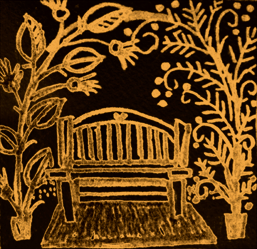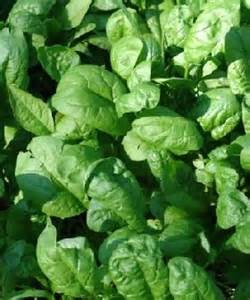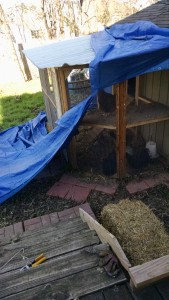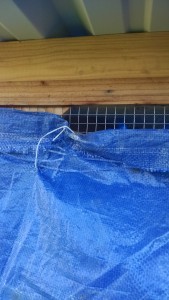The garden catalogs are arriving in my mailbox, and I scan the pages, dreaming of wonderful plants for the spring, summer and fall. The neat thing is that I get the paper catalog (okay, I’m a throw-back and love to touch it, see it, and feel it), but I can order online! Best of both possible worlds.
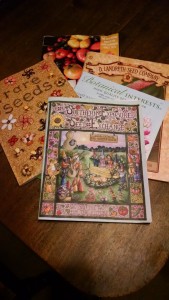
My favorite seed companies each have a unique offering.
The Southern Exposure Seed Exchange (www.southernexposure.com) is located in Virginia, so I can be assured that the varieties they offer are probably going to work in Texas. I love reading the descriptions of their offerings. All seeds are coded for those best suited for the Southeast, heirloom, ecologically grown and USDA certified organic. The heirloom varieties often have an indication of when they were “discovered” and where they originated. For example, “Fish Pepper…African-American heirloom from MD.” or for carrots…”Chantenay Red Core…introduced from France in the late 1800s.” or “Cosmic Purple…yellow and purple carrots were first recorded in Asia Minor in the 10th c. For the first few hundred years of managed cultivation, carrots were predominantly purple.” Wow! A history lesson along with descriptions. SESE also carries grains and cover crops: want sesame? hairy vetch? red clover, sorghum and broom corn? They have seeds!
Baker Creek Heirloom Seeds (www.rareseeds.com) perhaps has the most extensive catalog – it’s almost like a thin book! Baker Creek is located in Mansfield, MO, so I can be assured that I can find varieties that will work well in Texas. They carry vegetables, herbs and flowers. I can also get flax if I care to try growing fiber crops. The pictures are incredible. One eggplant that caught my eye was the Turkish Orange. It’s described as coming from Turkey. “The 3” round fruit are best cooked when they are green to light orange.”
Botanical Interests (www.botanicalinterests.com) is located in Colorado. But it has some very interesting varieties and a wonderful selection (3 varieties) of Texas Bluebonnets in their flower section. I think one of the heirlooms I’m going to try this year is the Scabiosa Pincushion Flower. It’s described as “Perennial. Blooms summer through fall.” Sounds wonderful with blue-purple and white flowers. On the peppers page, I learned that peppers have been around since 7500 BC and are cultivated around the world. Columbus brought the spicy pods back to Spain and about 50 years later “they were being grown throughout Europe, the Mediterranean, the Middle East, Asia and the African coast.” The selections are not quite as extensive as offered from some of the other seed merchants, but there are good, solid varieties.
The Landreth Seed Company, “purveyors of find seed since 1784,” is based in Pennsylvania (www.landrethseeds.com). Their catalog has the look of an heirloom. They even have a section specifically for a children’s garden. Vegetables offered are selected for their interest, such as purple plum radishes, African mini-bottle gourd, and Mexican sour gherkin. All varieties that are selected for their potential attractiveness to children. One section highlights varieties best suited for a patio/container garden.
The Pinetree garden seed catalog (www.superseeds.com) is a new one for me this year. Pinetree is located in Maine, so I will look through it to locate varieties that may be experimental for me. They also offer loose tea, such as “Nilgiri – organic, fair trade certified.” They offer culinary herbs, medicinal herbs and dyeing herbs as well as tobaccos for the gardening. I may try out the Hopi Red Dye Amaranth this year, since I’d really like to try dyeing some of my wool with reds. Pinetree was my source for the Bhut Jolokia (Ghost Pepper) seeds. It is described as “A legendary variety from India with its extreme heat, said to be one of the hottest pepper[s] in the world with a Scoville rating over 1 million units.” They take about twice as long as other peppers to mature. But my youngest daughter and her husband like to try extreme peppers, so this was a good choice for them to try. Note: only 20 seeds are in each packet!
It’s a good idea to order seeds (at least for spring) soon, because if a transplant goes in mid-March, but is started indoors 8-10 weeks before planting, that means January is the time to start those seeds!
We’ll talk more about starting seeds in the coming weeks.
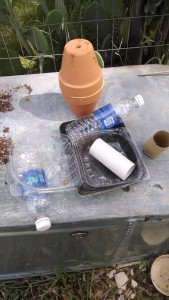 The last two weeks have been hectic. The Community Garden Conference in Grand Prairie, sponsored by the Tarrant County Food Bank and assisted by the North Texas Food Bank, was well attended. I was there with GROW North Texas; we team-taught a seed starting class. Andrea, the GNT Farmer Advocate talked about soil mixes, while I got my hands dirty and muddy, mixing up the seed starting concoction, and then I lead the “trash talk”. In other words, how to start seeds by repurposing things like toilet paper rolls and empty water bottles; how to roll a newspaper pot with a spice jar, and how to convert a strawberry clamshell into a mini-greenhouse. It was lots of fun, and a majority of the attendees took advantage of the hands-on, to plant some seeds and make some seed-starting pots.
The last two weeks have been hectic. The Community Garden Conference in Grand Prairie, sponsored by the Tarrant County Food Bank and assisted by the North Texas Food Bank, was well attended. I was there with GROW North Texas; we team-taught a seed starting class. Andrea, the GNT Farmer Advocate talked about soil mixes, while I got my hands dirty and muddy, mixing up the seed starting concoction, and then I lead the “trash talk”. In other words, how to start seeds by repurposing things like toilet paper rolls and empty water bottles; how to roll a newspaper pot with a spice jar, and how to convert a strawberry clamshell into a mini-greenhouse. It was lots of fun, and a majority of the attendees took advantage of the hands-on, to plant some seeds and make some seed-starting pots.